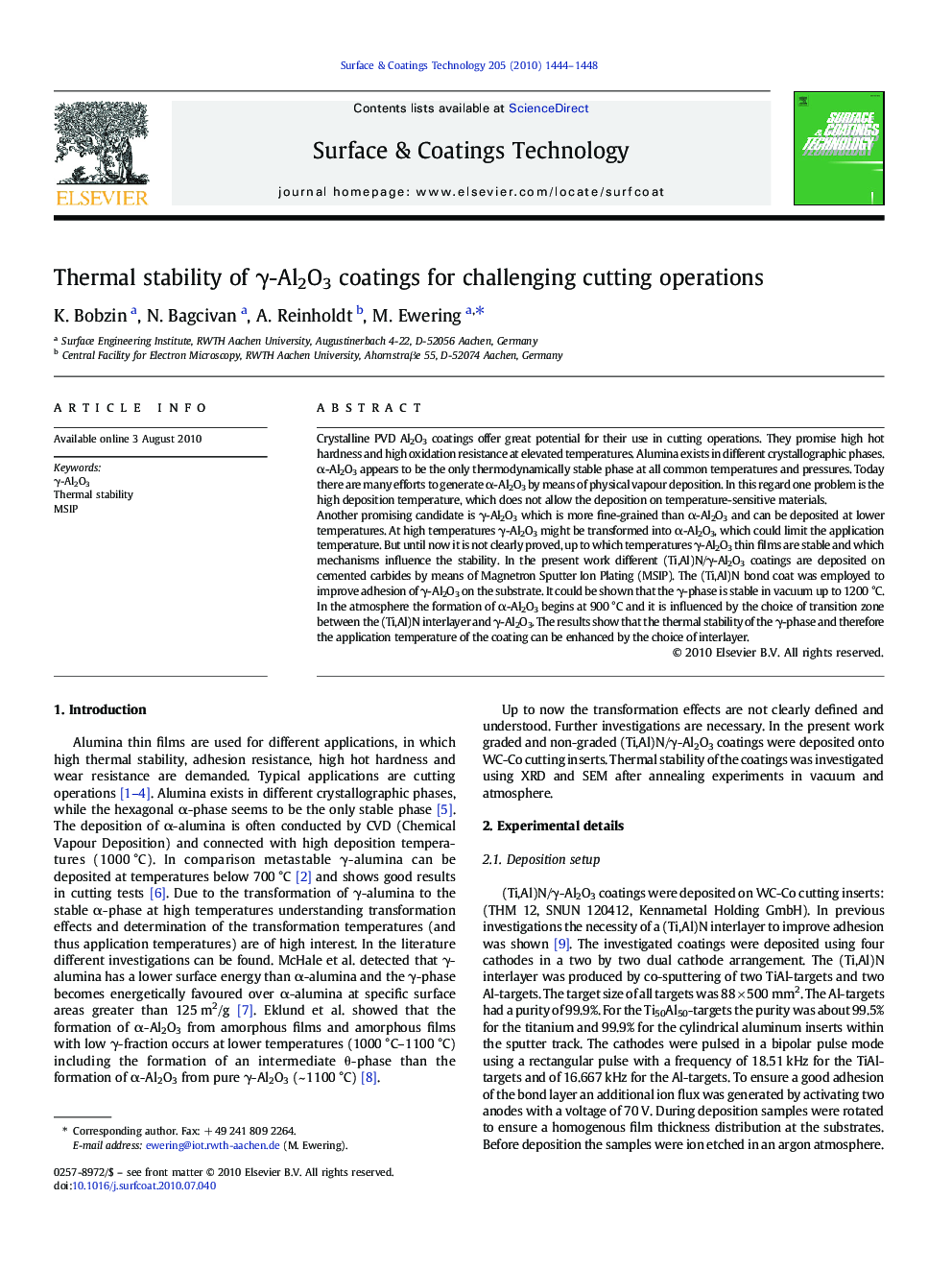| کد مقاله | کد نشریه | سال انتشار | مقاله انگلیسی | نسخه تمام متن |
|---|---|---|---|---|
| 1658808 | 1008361 | 2010 | 5 صفحه PDF | دانلود رایگان |

Crystalline PVD Al2O3 coatings offer great potential for their use in cutting operations. They promise high hot hardness and high oxidation resistance at elevated temperatures. Alumina exists in different crystallographic phases. α-Al2O3 appears to be the only thermodynamically stable phase at all common temperatures and pressures. Today there are many efforts to generate α-Al2O3 by means of physical vapour deposition. In this regard one problem is the high deposition temperature, which does not allow the deposition on temperature-sensitive materials.Another promising candidate is γ-Al2O3 which is more fine-grained than α-Al2O3 and can be deposited at lower temperatures. At high temperatures γ-Al2O3 might be transformed into α-Al2O3, which could limit the application temperature. But until now it is not clearly proved, up to which temperatures γ-Al2O3 thin films are stable and which mechanisms influence the stability. In the present work different (Ti,Al)N/γ-Al2O3 coatings are deposited on cemented carbides by means of Magnetron Sputter Ion Plating (MSIP). The (Ti,Al)N bond coat was employed to improve adhesion of γ-Al2O3 on the substrate. It could be shown that the γ-phase is stable in vacuum up to 1200 °C. In the atmosphere the formation of α-Al2O3 begins at 900 °C and it is influenced by the choice of transition zone between the (Ti,Al)N interlayer and γ-Al2O3. The results show that the thermal stability of the γ-phase and therefore the application temperature of the coating can be enhanced by the choice of interlayer.
Journal: Surface and Coatings Technology - Volume 205, Issue 5, 25 November 2010, Pages 1444–1448